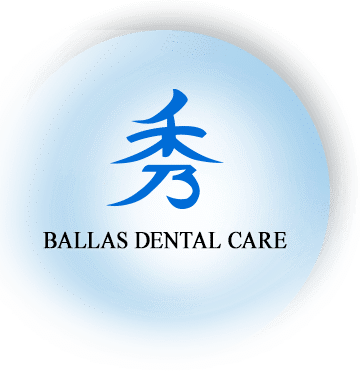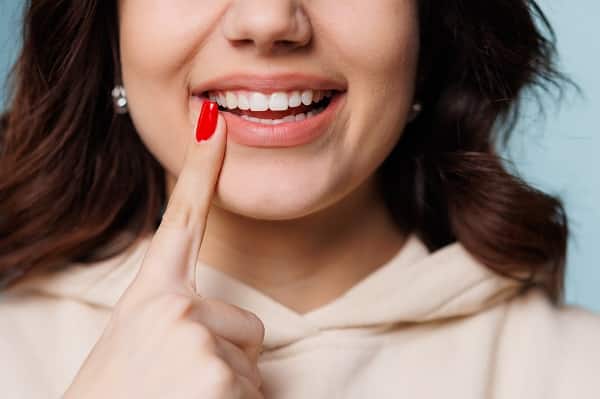If you are unhappy with the way your teeth look, this can have a significant impact on your life. Many people who are self-conscious about their teeth avoid smiling or taking photos, and they may even cover their mouths when they laugh. However, you shouldn’t have to let the way your teeth look affect your life in this way. If you are not satisfied with your smile, modern cosmetic dentistry can help give you the perfect smile you have always wanted, restoring your self-confidence. Yet, you may find yourself wondering what exactly cosmetic dentistry is, and what kind of procedures a cosmetic dentist performs. Keep reading as we give an overview of everything you need to know about cosmetic dentistry and the benefits it can provide patients with.
What is Cosmetic Dentistry?
Cosmetic dentistry is a branch of oral care that focuses on improving the appearance of the mouth, teeth, gums, and the way the patient’s smile looks. Cosmetic dentistry has grown increasingly popular in recent years, as these procedures can help give people newfound confidence. Cosmetic dentistry is usually not considered essential, as it focuses on improving the aesthetic of your smile rather than your overall oral health. However, cosmetic dentistry has been shown to provide numerous psychological benefits by reducing self-consciousness, improving patients’ feelings of self-worth, and by reducing depression symptoms. Cosmetic dentistry can then have a transformative effect on patients’ lives.
What Does a Cosmetic Dentist Do?
A cosmetic dentist focuses on improving the overall aesthetics of your teeth and smile, usually by making changes to the shape, color, position, or length of your teeth. Cosmetic dentists may perform a wide variety of procedures aimed at improving the look of your teeth from minor corrections to major surgeries. Common procedures a cosmetic dentist may perform include teeth whitening, veneers, fillings, and implants.
What procedures your cosmetic dentist will recommend will depend on a variety of factors including the condition of your teeth and the outcome you are hoping to achieve through cosmetic dentistry. If you are considering cosmetic dental procedures, it is important that you are open with your dentist during your consultation about what you hope to achieve, as this will help them come up with an appropriate treatment plan.
Common Cosmetic Dental Procedures
Oftentimes, cosmetic dentistry will require the use of a combination of procedures and treatment options in order to transform a patient’s smile. Depending on your situation, the procedures your cosmetic dentist could recommend may include:
Veneers
Dental veneers are thin, white shells made from medical-grade porcelain, resin, or ceramic that are custom-made to resemble a patient’s natural teeth. Veneers are essentially a cap that is placed over the tooth to correct a number of cosmetic issues including crooked teeth, cracked/chipped teeth, discoloration, gaps between teeth, and damaged enamel. Before attaching veneers, a dentist will remove some enamel from the tooth’s surface so that the shells can be bonded to the front of your teeth using a dental adhesive. Veneers are extremely realistic and can blend in with your natural teeth, however, they are not a permanent solution. The porcelain/ceramic can become damaged or wear away over time, with veneers needing to be replaced on average every ten years.
Invisalign
If your main complaint about your teeth is that they are crooked or misaligned, orthodontics can help straighten your teeth and give you the perfect smile you have always dreamed of. While braces are one of the most common options, many adults don’t want to deal with the limits braces can place on their eating habits and lifestyle. As an alternative, your orthodontist may suggest Invisalign.
Invisalign consists of invisible trays that you place over your teeth that are custom designed to slowly change the alignment of your teeth. Not only will no one be able to tell when you are wearing your Invisalign, but they are meant to be removed when you eat, meaning that you won’t have to change your diet like you would have to with traditional braces. Invisalign then makes it easy to get a straight smile without the hassle braces can cause.
Teeth Whitening
Teeth whitening is one of the most basic, and most common, treatments offered by cosmetic dentists. Over time, your teeth can become stained by food, drinks, medications, and smoking. In particular, regularly consuming dark foods like wine, coffee, and berries can lead to significant teeth darkening. Fortunately, professional teeth whitening is a simple and safe procedure that can lighten your teeth by as much as 16 shades.
When getting your teeth professionally whitened, your dentists will first clean your teeth to remove plaque, tartar, and other debris. They will then apply a bleaching agent to your teeth to restore their natural color. Professional teeth whitening treatments only take an hour or two, and they provide significantly better results than at-home whitening strips and toothpastes.
Bonding
Dental bonding is a process used to repair decayed, damaged, or discolored teeth using a material that resembles tooth enamel. For this procedure, your dentist will drill out the area of tooth decay and apply a composite material onto the tooth’s surface that they will then sculpt to match your other teeth. The composite will then be hardened with ultraviolet light.
Bonding is a simple and effective procedure that can cover tooth damage and restore the look of your smile. The great thing about bonding is that it tends to be more affordable than fillings or crowns, making it a great option for patients with tooth decay, chipped or cracked teeth, or worn-down edges. It is important to note, however, that dental bonding is not permanent, and this procedure will need to be repeated every five to seven years.
Dental Implants
In instances where a patient presents with severe tooth decay or tooth loss, they may need to have one or more teeth replaced with an implant. When installing dental implants, a cosmetic dentist will first attach a screw to the jaw to provide support. Then, the false tooth (implant) is inserted into the bone socket of the missing tooth. As time passes, the bone and tissue fuse to the implant securing the tooth inside the mouth. Dental implant technology has come a long way in recent years, and a high-quality implant will be nearly indistinguishable from the surrounding natural teeth.
Inlays and Onlays
Inlays and onlays are also known as indirect fillings, and they are used in instances where a tooth is too decayed to support a traditional filling. While these fillings were once made of gold, they are now made in a laboratory using porcelain or ceramic that is then bonded in place by a cosmetic dentist. When the material is bonded to the center of a tooth, this is called an inlay. An onlay is when the filling covers multiple areas of the tooth or the tooth’s entire surface. Onlays and inlays are often used as alternatives to crowns as they preserve more of the tooth’s natural surface while still restoring the tooth after significant decay has taken place.
A Complete Smile Makeover
Many cosmetic dentists also provide complete smile makeover services. For patients who have failing teeth, multiple bad teeth, or missing teeth who don’t want dentures, a cosmetic dentist can provide alternative options to give their smile a complete makeover. Your dentist will decide whether implants, veneers, bridges, or a combination of procedures is the best option to restore your smile to where it once was. Complete smile makeovers often require multiple procedures spread out over several visits.
The Benefits of Cosmetic Dentistry
There are many benefits patients stand to gain by investing in cosmetic dentistry. Not only can cosmetic dentistry improve the look of your smile and boost your self-confidence, but it can provide numerous additional benefits including:
- Enhancing Your Smile
- Brightening Your Teeth
- Improving Tooth Shape
- Repairing Damaged Teeth
- Bringing Symmetry to Your Smile
- Reducing Feelings of Self-Consciousness and Depression
You may also be surprised by how much easier eating becomes after undergoing cosmetic dentistry. If you have damaged or missing teeth, you may find it difficult to eat hard foods. With new implants in place, you will likely find it easier to eat, and you will once again be able to enjoy old favorite foods that you had to cut out of your diet due to the condition of your teeth.
Of course, the benefits of cosmetic dentistry only last if you take proper care of your new smile. After undergoing cosmetic dental procedures, it is critical that you prioritize oral health care including brushing your teeth twice a day, flossing once a day, and visiting your dentist regularly for exams, x-rays, and cleanings.
Cosmetic vs. Non-Cosmetic Dentistry
So, what exactly is the difference between cosmetic and non-cosmetic dentistry? While cosmetic dentistry is focused on improving the look of an individual’s teeth and the appearance of their smile, general dentists are focused on overall oral health. A general dentist acts as a primary dental provider who offers preventative care like teeth cleanings and exams as well as restorative care treatments such as fillings and root canals. An important thing to note about cosmetic dentistry is that these procedures often aren’t covered by dental insurance as they are seen as unnecessary for oral health. Since they focus on smile beautification, cosmetic dental procedures often have to be paid for out-of-pocket.
Who Should See a Cosmetic Dentist?
So, how will you know if you are a good candidate for cosmetic dentistry? Ultimately, you should consider consulting a cosmetic dentist if you are unhappy with your smile due to current imperfections in your teeth. A cosmetic dentist can help restore your smile and boost your self-confidence if you have tooth decay, damaged teeth, crooked teeth, misshapen teeth, discolored teeth, or missing teeth. You should also consider consulting a cosmetic dentist if imperfections if your smile makes it difficult for you to eat or speak, as cosmetic dentistry could transform your daily life.
Regardless of what dental problems you are facing, cosmetic dentistry can help ensure you are confident about the way your smile looks when you leave the house. If you are at all embarrassed or self-conscious about your teeth, then you may be a good candidate for cosmetic dentistry.
How Much Does Cosmetic Dentistry Cost?
As we previously mentioned, most dental insurance policies consider cosmetic dentistry to be elective procedures since they focus on beautification rather than overall oral health. This may leave you wondering how much cosmetic dental procedures could cost you. Unfortunately, there is no simple answer to this question, as the cost of cosmetic dentistry can vary greatly depending on the type of procedures you are interested in and how much work needs to be done to get your smile where you’d like it to be. While a single teeth whitening session may only cost a few hundred dollars, a full smile makeover can cost several thousand dollars. If you are considering cosmetic dental procedures, you should schedule a consultation to learn more about your treatment options and how much the procedures could cost you.
Contact Ballas Dental to Learn More About Cosmetic Dentistry
Cosmetic dental procedures can help transform your smile and restore your self-confidence. If you are considering cosmetic dentistry, feel free to contact us to learn more about your treatment options. One of our experienced dental professionals can discuss your options and come up with a treatment plan to restore your smile. You will likely be surprised by the way a few simple cosmetic dental procedures can change the way you perceive yourself and the way you interact with the world around you. No longer will you have to hide your teeth, as you will have a new smile you can be proud of.

